Ludwigsburg
| Ludwigsburg | |
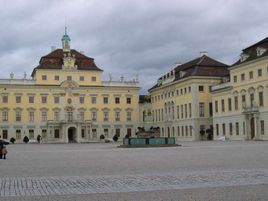 |
|
 |
|
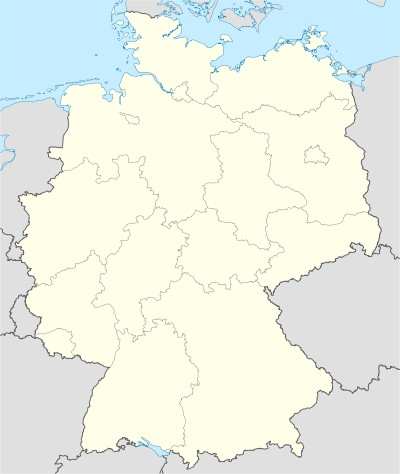 Ludwigsburg
|
|
| Coordinates | |
| Administration | |
| Country | Germany |
|---|---|
| State | Baden-Württemberg |
| Admin. region | Stuttgart |
| District | Ludwigsburg |
| Mayor | Werner Spec |
| Basic statistics | |
| Area | 43.33 km2 (16.73 sq mi) |
| Elevation | 293 m (961 ft) |
| Population | 87,460 (31 December 2009)[1] |
| - Density | 2,018 /km2 (5,228 /sq mi) |
| Other information | |
| Time zone | CET/CEST (UTC+1/+2) |
| Licence plate | LB |
| Postal codes | 71634–71642 |
| Area code | 07141 |
| Website | www.ludwigsburg.de |
Ludwigsburg is a city in Baden-Württemberg, Germany, about 12 kilometers (7.5 miles) north of downtown Stuttgart, near the river Neckar. It is the largest and primary city of the Ludwigsburg urban district with about 87,000 inhabitants. It belongs to the Stuttgart region in the administrative region (Regierungsbezirk) of Stuttgart.
Contents |
History
The middle of Neckarland, where Ludwigsburg lies, was settled in the stone and bronze ages. Numerous archaeological sites from the Hallstatt period remain in the city and surrounding area.[2]
Toward the end of the 1st century, the area was occupied by the Romans. They pushed the Limes further to the east around 150 and controlled the region until 260, when the Alamanni occupied the Neckarland. Evidence of the Alamanni settlement can be found in grave sites in the city today.
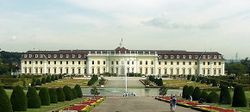
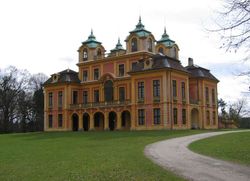
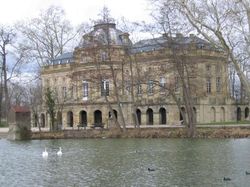
The origins of Ludwigsburg date from the beginning of the 18th century (1718–1723) when the largest baroque castle in Germany, Ludwigsburg Palace was built by Duke Eberhard Ludwig von Württemberg. Originally, the Duke planned to just build one country home (albeit a palace), which he began building in 1704. However, the examples of other princes fostered a desire to project his absolutist power by establishing a city. To the baroque palace, he added a hunting lodge and country seat, called Schloss Favorit (1713–1728), and the Seeschloss (castle on the lake) Monrepos (1764–1768).[3]
A settlement began near the palace in 1709 and a town charter was granted on 3 April 1718. That same year, Ludwigsburg became a bailiff's seat, which eventually became the rural district of Ludwigsburg in 1938.
In the years between 1730 and 1800, the royal seat of residence changed back and forth several times between Stuttgart and Ludwigsburg. In 1800, Württemberg was occupied by France under Napoleon Bonaparte and was forced into an alliance. In 1806, the Kurfürst (Prince-Elector) Friedrich was made king of Württemberg by Napoleon. In 1812, the Württembergish army was raised in Ludwigsburg for Napoleon's Russian campaign. Of the 15,800 Württemberg soldiers who served, just a few hundred returned.
In 1921, Ludwigsburg became the largest garrison in southwest Germany. In 1945, Ludwigsburg was made a "Kreisstadt" (urban district), and later, when the Baden-Württemberg municipal code took effect on 1 April 1956, the city was named a major urban district. In 1956 the tradition of the German garrison town was taken up again by the Bundeswehr, Germany's federal armed forces.
2004 was the 300th birthday of Residenzschloss Ludwigsburg, celebrated by the opening of the Baroque Gallery and the Ceramic Museum in the Residenzschloss.
Jews and World War II
Jewish families began living in Ludwigsburg during the 19th century and in 1884, a synogogue was built on Solitudestraße, which was later destroyed by storm troopers during the pogrom of November 1938.[4] In 1988, the perimeter of the structure was marked out in plaster on the site. A 1959 memorial and newer memorial plaques commemorate the Jewish Holocaust victims and extol human rights.[5]
In 1940, the Nazi propaganda film, Jud Süß, was filmed in Ludwigsburg. Based on the historical figure, Joseph Süß Oppenheimer, who was executed in Stuttgart in 1738; Oppenheimer lived in Ludwigsburg.[6][7] During World War II, the city suffered moderate damage compared to other German cities. There were 1500 deaths. It was the home of the prisoner-of-war camp Stalag V-A from October 1939 till April 1945. After the war, there was a large displaced persons camp which housed several thousand mainly Polish displaced persons until about 1948. After 1945 until the middle of 1946, there was also an allied internment camp for war criminals in Ludwigsburg and the U.S. Army maintained a barracks on the edge of town, large enough to have its own American high school. The land was returned to Germany in 1994.
On September 27, 2008, the first 12 Stolpersteine were laid in Ludwigsburg.[8] They are part of a project by artist Gunter Demnig to memorialize individuals who perished under Nazi persecution. Demnig was back in Ludwigsburg on October 7, 2009 to install more Stolpersteine.[9]
Business and Industry
The North-South Powerline, includes a large transformer station Ludwigsburg-Hoheneck, built in 1926, which still exists today. It is a central junction in the power lines of Baden-Württemberg to this day.
On 5 October 1957, the first 380kV-powerline in Germany between the transformer station Ludwigsburg-Hoheneck and Rommerskirchen went into service.
Other Local Businesses
- GdF Wüstenrot, building and loan association
- Beru AG, automotive supplier
- Getrag GmbH, automotive supplier
- Mann+Hummel, manufacturer of automotive filtration products
City government
The town council has 40 members. The last local election was on 7 June 2009. The voter participation was 45.35%. The results of the election were:
| Party | Seats | % |
|---|---|---|
| CDU | 10 | 24.80% |
| SPD | 8 | 18.73% |
| Freie Wähler1 | 7 | 17.82% |
| GRÜNE | 7 | 17.48% |
| FDP | 4 | 9.79% |
| LUBU2 | 2 | 5.32% |
| DIE LINKE | 1 | 3.66% |
| REP | 1 | 2.41% |
Coat of arms

The Coat of Arms is blue with an angular red flagpole and golden banner depicting a large black eagle with red beak and talons.
The city banner is black and yellow and was introduced in 1750.
Public institutions
In 1966, the Pädagogische Hochschule, a teaching college, and the "Staatliche Sportschule Ludwigsburg" (State Sports School) were opened. In 1991, the national film school Filmakademie Baden-Württemberg was established in Ludwigsburg.[10]
Other educational institutions
- Otto-Hahn-Gymnasium (German)
- Friedrich-Schiller-Gymnasium (German)
- Goethe-Gymnasium (German)
- Moerike-Gymnasium (German)
- Gottlieb-Daimler Realschule (German)
- Elly-Heuss-Knapp Realschule (German)
- Oststadt Hauptschule (German)
- Eugen-Bolz Hauptschule (German)
- Uhlandschule Hauptschule (German)
Sports
Ludwigsburg has six teams in the top level of professional sports. They are EnBW Ludwigsburg (Basketball), both formations A and B of the dance team (1. Tanzclub Ludwigsburg), the Latin-formation (TSC Ludwigsburg), the Hockey-Club Ludwigsburg 1912 e. V. and the riflery team of Ludwigsburg. There are also amateur clubs for various sports.
Districts
The following suburbs are parts of Ludwigsburg, starting north of the city and going clockwise:
- Marbach am Neckar, Erdmannhausen, Affalterbach, Remseck am Neckar, Kornwestheim, Möglingen, Asperg, Tamm, Freiberg am Neckar und Benningen am Neckar.
- Eglosheim
- Grünbühl
- Hoheneck, with a therapeutic and thermal bath, opened in 1907
- Neckarweihingen
- Oßweil
- Pflugfelden
- Poppenweiler
- Weststadt
Population growth
|
|
|
¹ Population census
Notable people
Karl Eugen, Duke of Württemberg, enrolled the young Friedrich Schiller in the Karlsschule Stuttgart (an elite military academy he had founded) in 1773, where Schiller eventually studied medicine. The Duke was very demanding of his students, and Schiller's childhood was a lonely and unhappy one, but he was greatly enriched by the excellent education he received. It was there that he wrote his first play, Die Räuber ("The Robbers"), about a group of naïve revolutionaries and their tragic failure.
Leopold Mozart visited Württemberg with his son, Wolfgang Amadeus Mozart in July 1763 and said, "Ludwigsburg is a very special town."[11]
Present and former residents of Ludwigsburg
- Horst Köhler, former Federal President of Germany and previous managing director of the International Monetary Fund (IMF) grew up in Ludwigsburg.[12]
- Hans Scholl, student and member of the Nazi resistance group, the White Rose, executed by the Nazis
- Sophie Scholl, student and member of the Nazi resistance group, the White Rose, executed by the Nazis[13]
- Friedrich Silcher wrote music in Ludwigsburg
- Carl Maria von Weber wrote music in Ludwigsburg.
People born in Ludwigsburg
- Charles Pfizer (1824–1906), chemist and founder of Pfizer Inc.
- Wilhelm Groener (1867–1939), soldier and politician
- Caesar von Hofacker (1896–1944), soldier and Nazi resistance member, hanged for treason
- Eduard von Kallee (1818-1888), general, painter und archaeologist
- [[Richard Kallee (1854-1933), Protestant pastor of Stuttgart-Feuerbach
- Justinus Kerner (1786–1862), writer and physician
- Eduard Mörike (1804–1874), poet and theologian
- Karl Ludwig von Phull (1757–1826), general
- Christian Friedrich Daniel Schubart (1739–1791), poet
- Tony Schumacher (1848–1931), author of children's books
- David Friedrich Strauß (1808–1874), theologian and writer
- Albert Veiel (1806–1874), dermatologist
- Friedrich Theodor Vischer (1807–1887), theologian, professor, and politician
- Reinhard von Werneck (1757–1842), soldier and director of Munich's Englischer Garten
Twin towns (sister cities)
Ludwigsburg is twinned with:
 Montbéliard, France, since 1950
Montbéliard, France, since 1950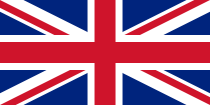 Caerphilly, United Kingdom, since 1960
Caerphilly, United Kingdom, since 1960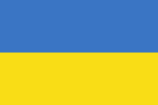 Eupatoria, Ukraine, since 1990
Eupatoria, Ukraine, since 1990 Saint Charles, USA, since 1995
Saint Charles, USA, since 1995
Further reading
- Andrea Hahn: Ludwigsburg, Stationen einer Stadt, Andreas Hackenberg Verlag, Ludwigsburg 2004, ISBN 3-937280-02-2
- Gernot von Hahn, Friedhelm Horn: Ludwigsburg, Stadt der Schlösser und Gärten, Medien-Verlag Schubert, Stuttgart 1998, ISBN 3-929229-55-2
- Bruno Hahnemann: Ludwigsburg. Stadt - Schlösser - Blühendes Barock, Verlag Ungeheuer + Ulmer, Ludwigsburg 1979
- on the sidelines, Frederick Forsyth: The Odessa File (ISBN 0-553-27198-9)
References
- ↑ "Bevölkerung und Erwerbstätigkeit" (in German). Statistisches Landesamt Baden-Württemberg. 31 December 2009. http://www.statistik.baden-wuerttemberg.de/Veroeffentl/Statistische_Berichte/3126_09001.pdf.
- ↑ Hans-Peter Stika. "Traces of a possible Celtic brewery in Eberdingen-Hochdorf, Kreis Ludwigsburg, southwest Germany" Vegetation History and Archaeobotany Volume 5, Numbers 1-2 (June, 1996). Accessed March 4, 2010
- ↑ Official website of the Ludwigsburg Palace
- ↑ Jewish History of Ludwigsburg Official website of Alemania Judaica. Accessed March 3, 2010
- ↑ Gedenkstätten für die Opfer des Nationalsozialismus. Eine Dokumentation. (Memorial Sites for the Victims of Nazism. A Documentary Report) Volume I, Bonn 1995, page 56, ISBN 3-89331-208-0 (German)
- ↑ Description of cultural tour through Ludwigsburg "Guided City Tours Ludwigsburg." Accessed March 3, 2010
- ↑ German Propaganda Archive: Jud Süss. Eight-page flyer from Illustrierter Film-Kurier magazine (1940). Accessed March 4, 2010
- ↑ "Erinnerung an zwölf Nazi-Opfer" Ludwigsburger Kreiszeitung (October 3, 2008) Retrieved June 12, 2010 (German)
- ↑ "Chronik: October 2009" Stolperstein, official website. Retrieved June 12, 2010 (German)
- ↑ "The History of the Baden-Württemberg Film Academy"
- ↑ "Ludwigsburg Travel Guide" world66.com Accessed March 4, 2010
- ↑ Résumé of President Horst Köhler Official presidential website. Retrieved March 2, 2010
- ↑ Sophie Scholl in Ludwigsburg. Website about Sophie Scholl's childhood years in Ludwigsburg. Accessed March 4, 2010
External links
- Official website of the City of Ludwigsburg
- Tourism Information about Ludwigsburg (German)
- Ludwigsburg travel guide from Wikitravel
- Ludwigsburg at the Open Directory Project
|
|||||||